Eric Ouimet’s screen prints are a meticulous blend of relatable mid-century nostalgia and instantly recognizable Winnipeg skylines. He’s been creating art for as long as he can remember, and it shows in his ability to translate a handful of solid colours into familiar-feeling memories.
How did you come to open your studio?
I’d been doing branding and a lot of design work for other companies, and I thought that my voice would be able to find traction somewhere. I decided to start testing the waters, like “Hey, would you put this up in your house if I were to make this?” And people really responded positively. So, I just decided one day—I will do this. I’ll start a screen-printing studio out of my house. And within a month I had a lot of the equipment, and then we were building a lot of equipment ourselves. I just had a gallery show and launched it and it’s been growing since. It’s been a fun ride so far and I’m excited to see where else it’ll take me.
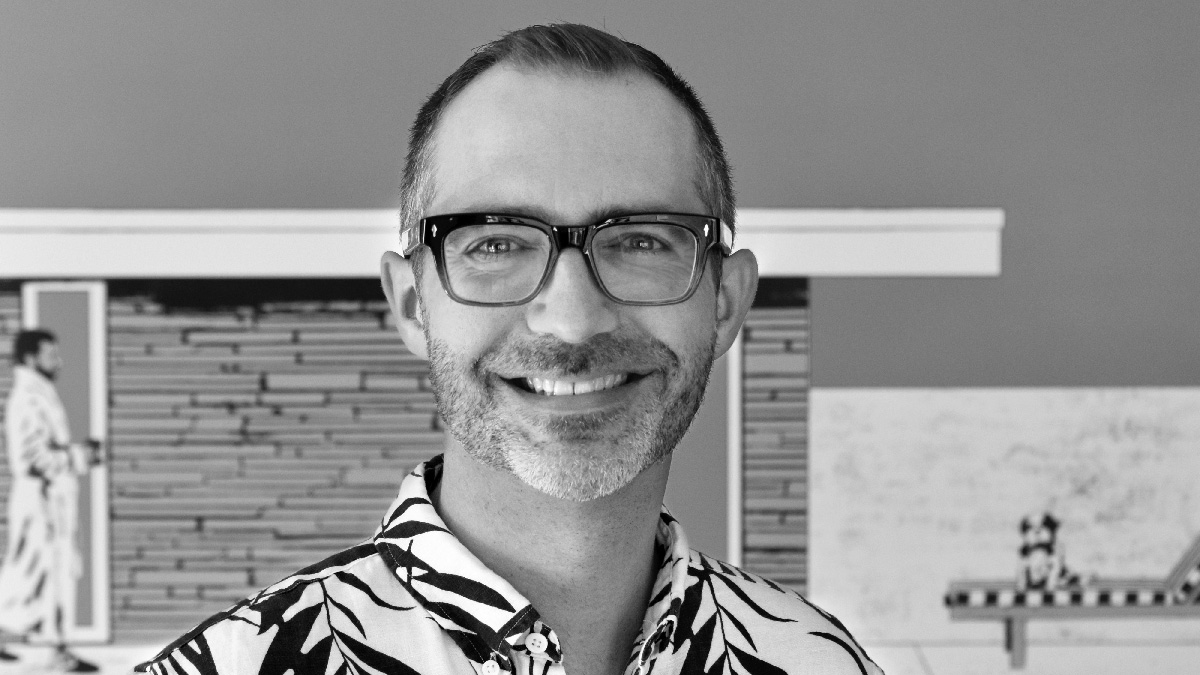
Can you describe what your creative process is like? Is there a specific environment or type of music that helps you work?
With each piece I don’t dedicate it, but in my head, I’m like, “Okay, the vibe of this piece is Lionel Richie,” and that’s what I’m playing while I’m making it. From the beginning to the end of that piece, I’m playing Lionel Richie. And I’m not a huge country music fan, but for some pieces, like a horizon or a wheat field, I’ll listen to country. I’m all over the map, but I’m always listening to something chromatic to what I’m working on. If it’s midwinter, it will be more jazzy type of stuff. Summer it’ll be Cyndi Lauper and a lot of the 80s stuff.
You draw inspiration from the city and the places around you, but where else do you draw inspiration from?
I do have a love for architecture—everything architecture. From old to new, and especially the mid-century era of Winnipeg. I love billboards, but from the back, or drive-in movie theatres. I really gravitate towards that. I do have a lot of rural farm scenes as well, because I’ve lived half my life on a farm and the other half in a condo in downtown Winnipeg. I’ve been all over the place and it’s all represented in my work.
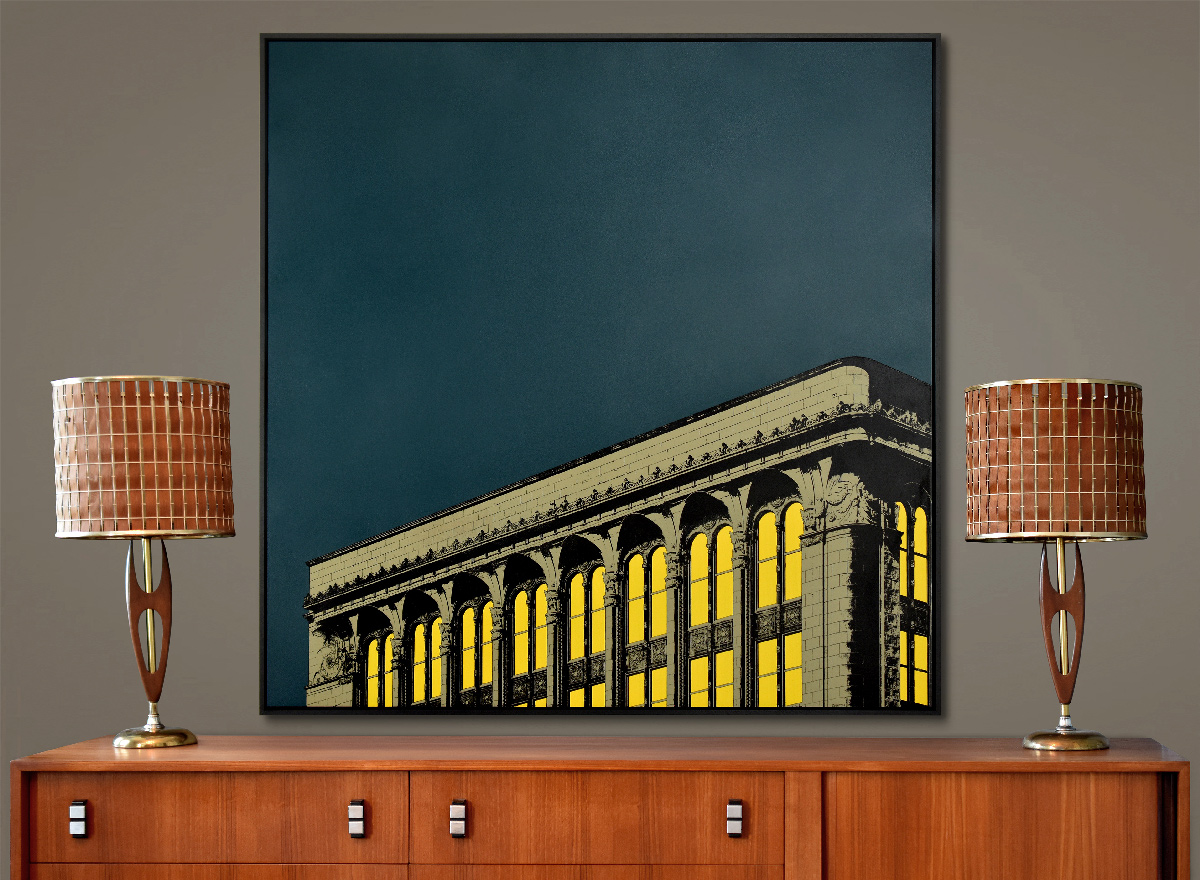
What’s one tool at your desk or workspace that you couldn’t live without?
I have some items on my desk that are both grounding and relaxing because there’s a lot of stressful moments in life. For me, it’s a snow globe of my family farm home. We had it made for my parents’ 50th anniversary. I grew up here, my parents still live here, this is the house. So, I got myself one. It’s just one of those items that is always there and no matter what, when I look at that place, I can breathe. It’s something that I highly recommend for people if they’ve got a cabin in the family, or some place that gives them a Zen environment. It really does help to see it and picture yourself at home where you can breathe the air—and then move on.
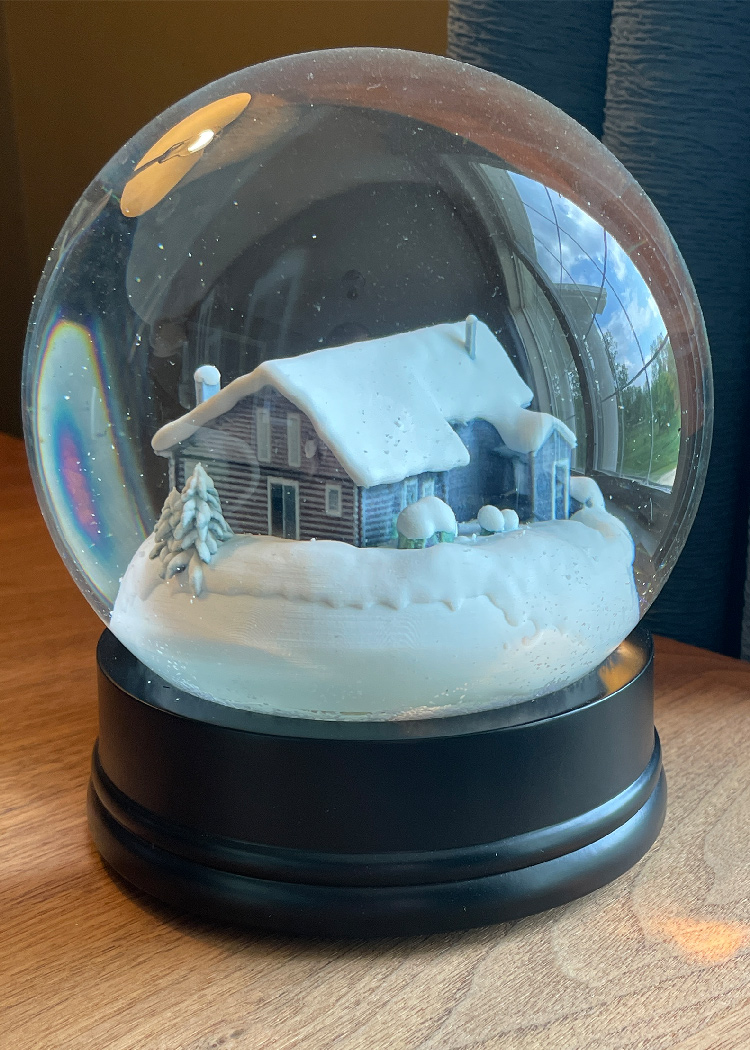
Could you speak to your journey as a queer artist and how that influences your creative life?
The two are so intertwined. I don’t know at what point it started being reflected in the work. I think it always was, because at my core I always knew that I was who I was. My art has always reflected that. If you look back, it’ll be the same as what you see now—lots of stories. Often I’ll have a gay couple in one of my pieces amongst other couples, and I just always make sure that there’s some representation within the crowd. Like this piece I just released today. It’s two guys on a bike, you can read what you want with it, but that’s my childhood, right? That’s how I saw things.
Can you talk about the importance of representation in design—particularly in relation to the 2SLGBTQ+ community—and how you address it in your work?
Having grown up in the 80s there wasn’t a ton of art on the walls that had two guys in it. But my screen-prints are fairly accessible, so they’re in living rooms, in restaurants and hotels and stuff. There’s a lot of eyeballs seeing that and there’s going to be children that are going to see those and think, “Oh, that looks like me,” and “I know that I’m not the only one doing that.”
Every little bit helps.
And it is important to me to reflect my life into the imagery that people can see themselves in. That’s important, right?
In the piece that I did for my last show at the Mayberry, there were several cars, different kinds of dynamics, different age groups. You had the minivan with the family and a convertible had the gays in it. You’ve got all kinds of lives harmoniously in that world.
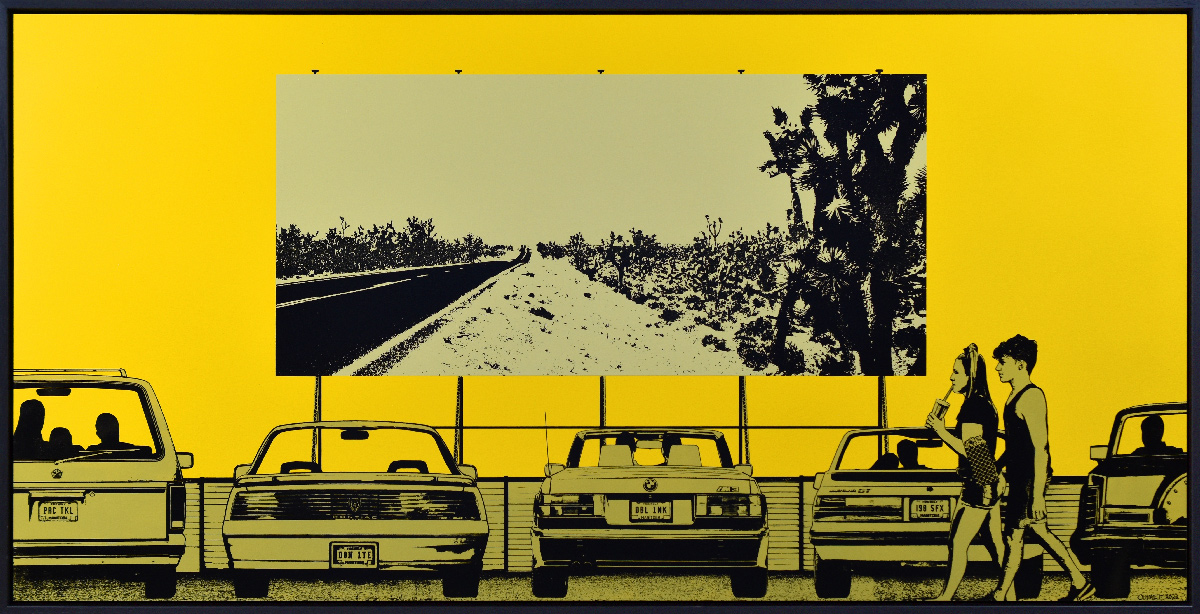
How can people support queer artists right now?
Share their stuff on social media, buy whatever they’ve got that you like and can afford. If you’re looking for art, make sure that you’re looking at all your options, and not just running to HomeSense. I get that a lot of it is out of people’s price range. That’s totally fair, especially now with the inflation the way it is. But if you’re going to be spending money on something, take a look at all your options.
Take a look at local artists, because our scene here is amazing.
But even just sharing people’s work goes a long way, because the more eyeballs you get the better. That’s how I like to support all the artists that I follow and enjoy.
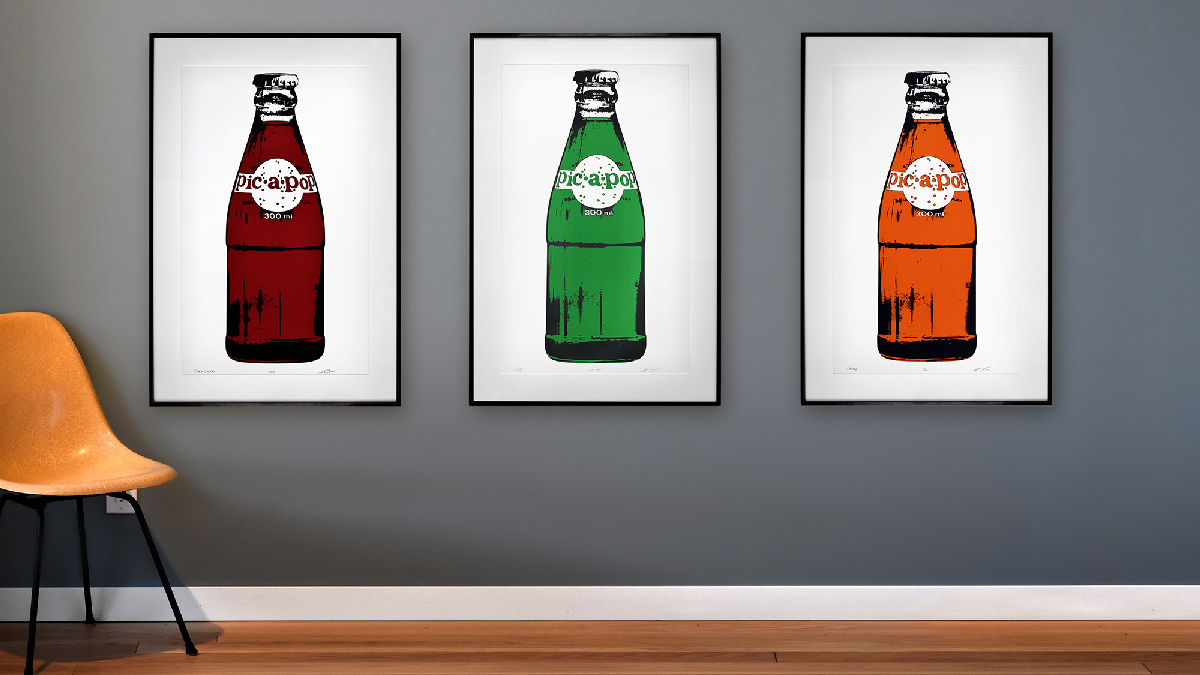
What advice would you have for other queer creatives who are just starting out in their careers?
That’s a tough one, there’s a lot of hatred surfacing these days. There’s no shortage of that. Don’t let that kill your creative spirit. Tune that noise out and focus on what brings you joy, focus on what makes you happy and just create. Don’t let them win. That’s something that you will always be practicing over the years. Hopefully you don’t have to do it often, but that noise is always there and sometimes it’s louder than others. Just don’t let them win, just create what you want to create and tune that stuff out.
You can see more of Eric’s work on his website or by following @ecouimet on Instagram.



